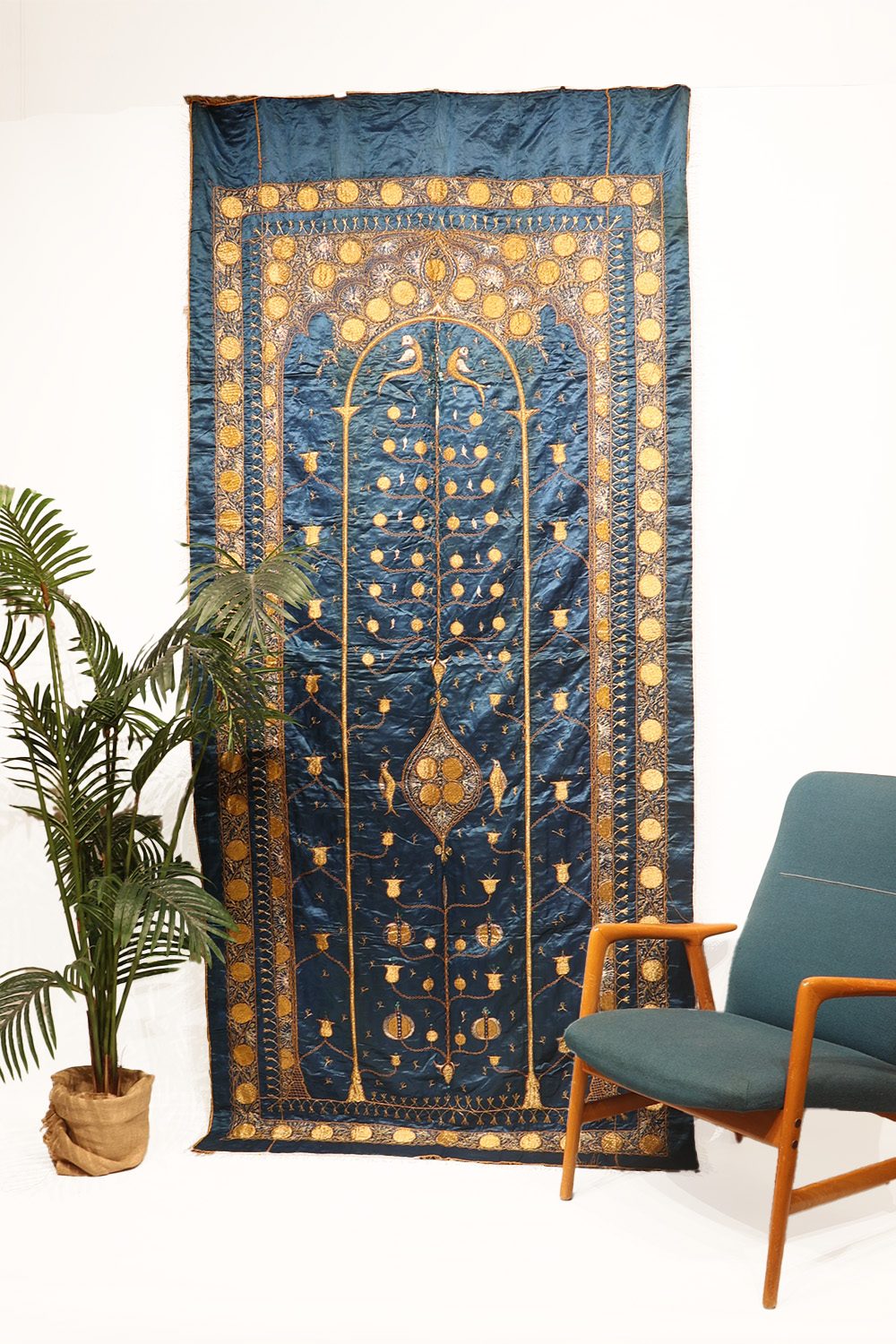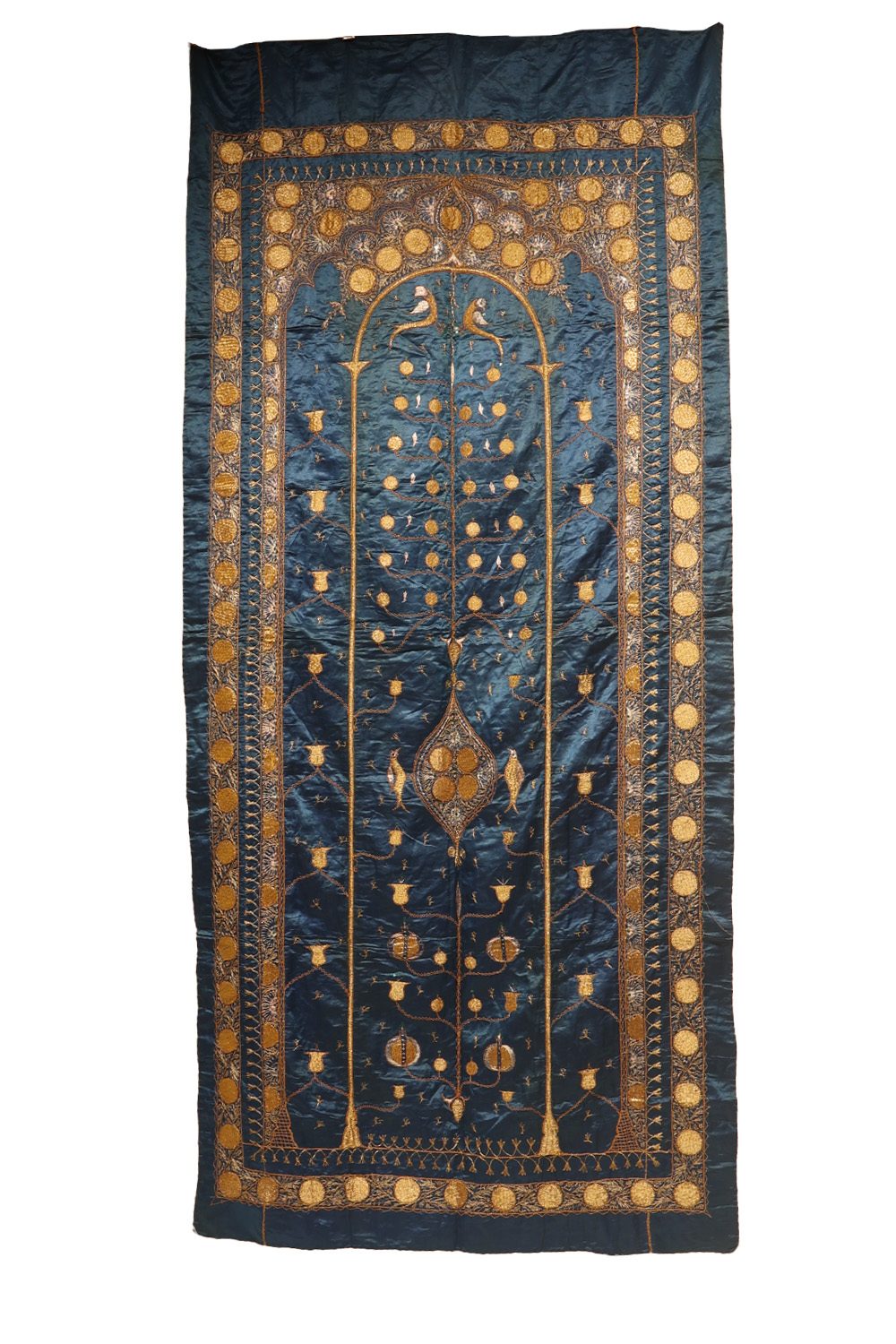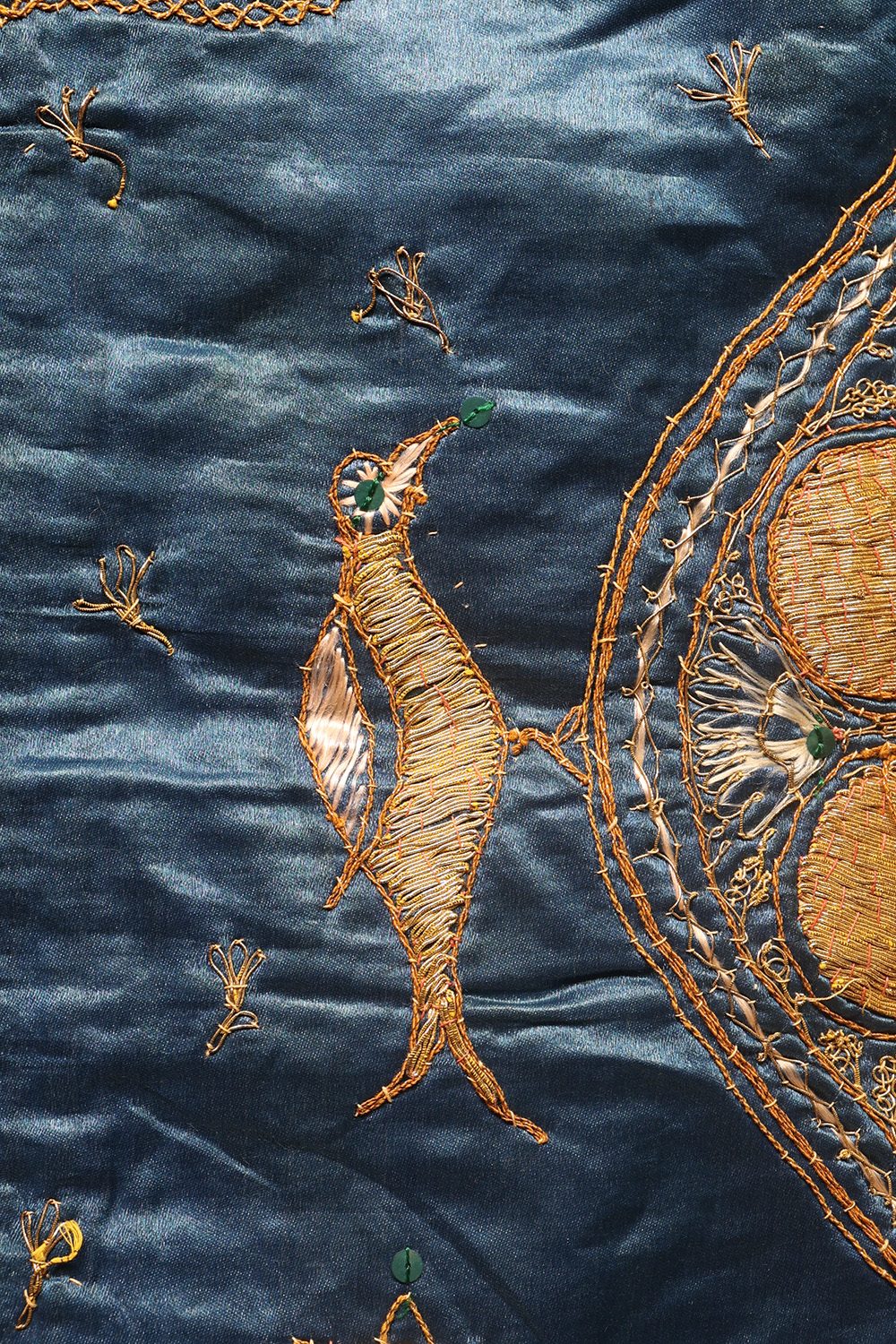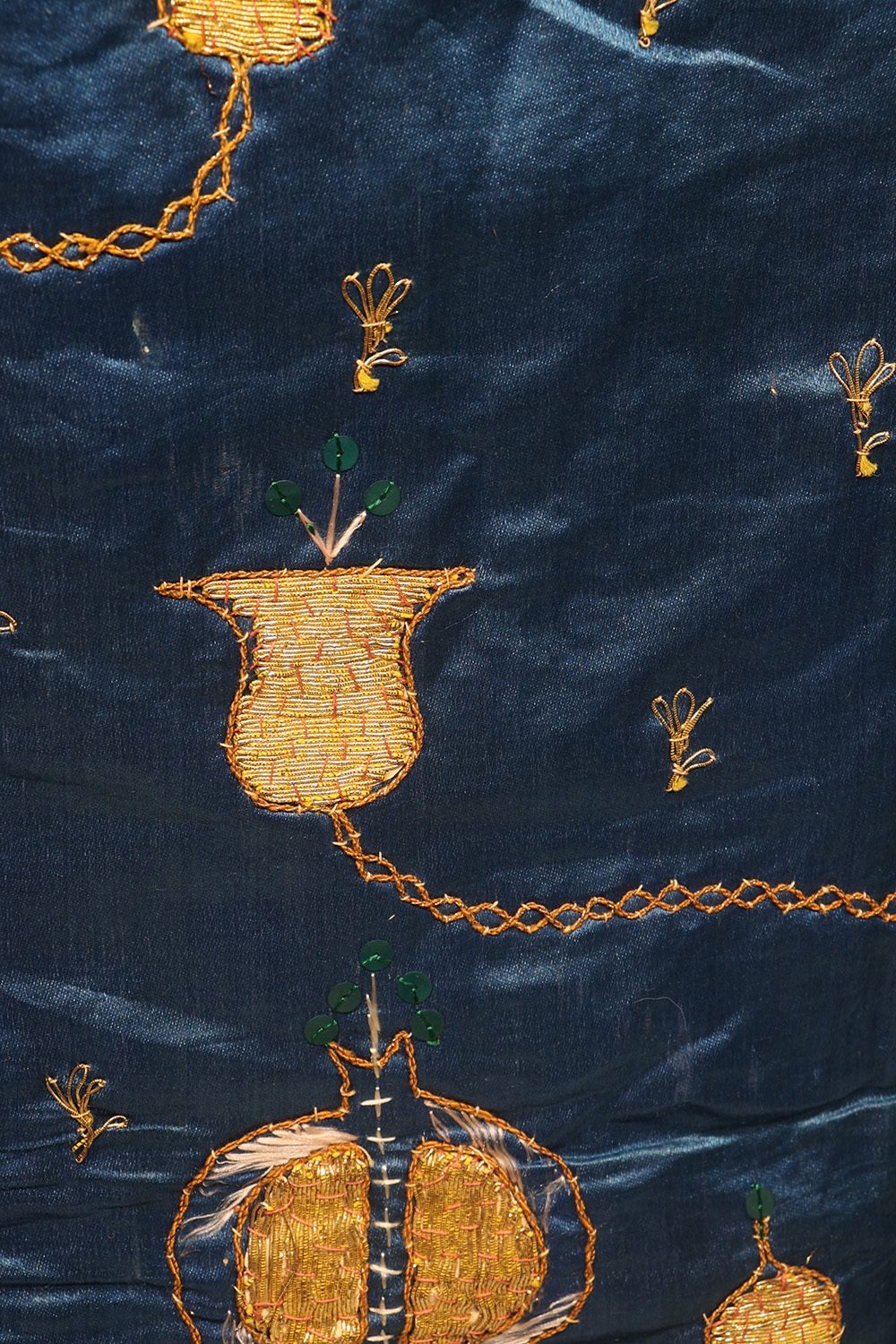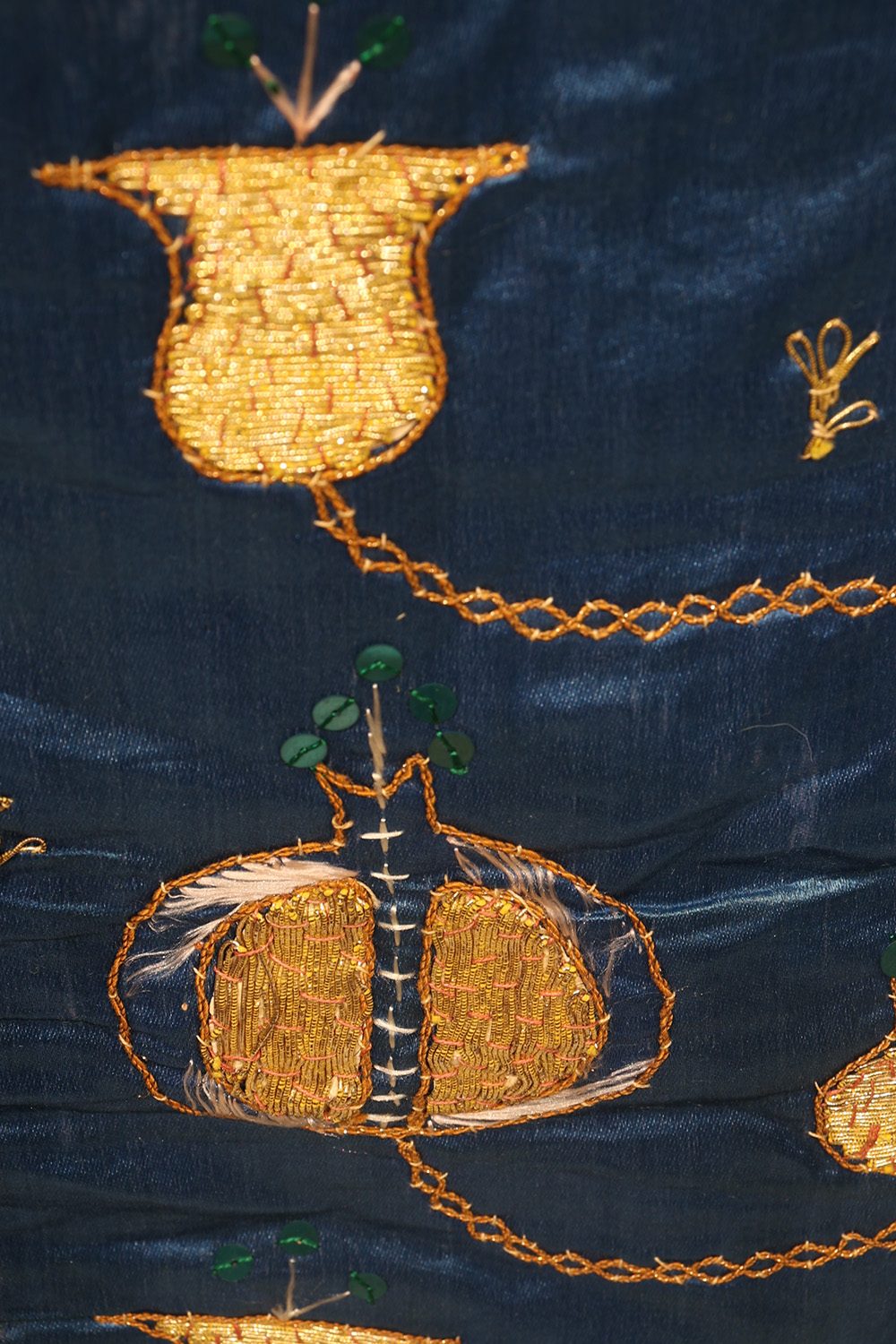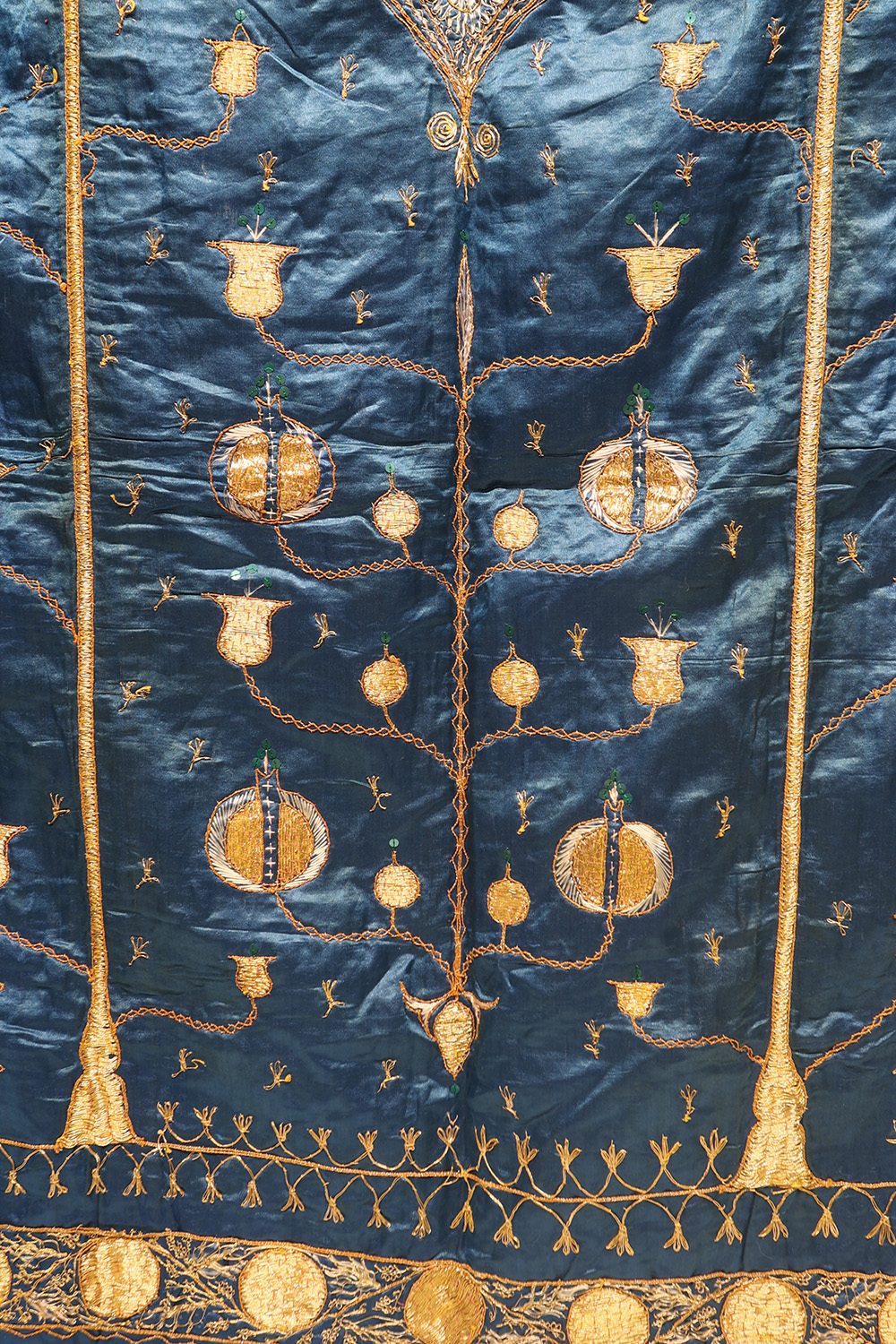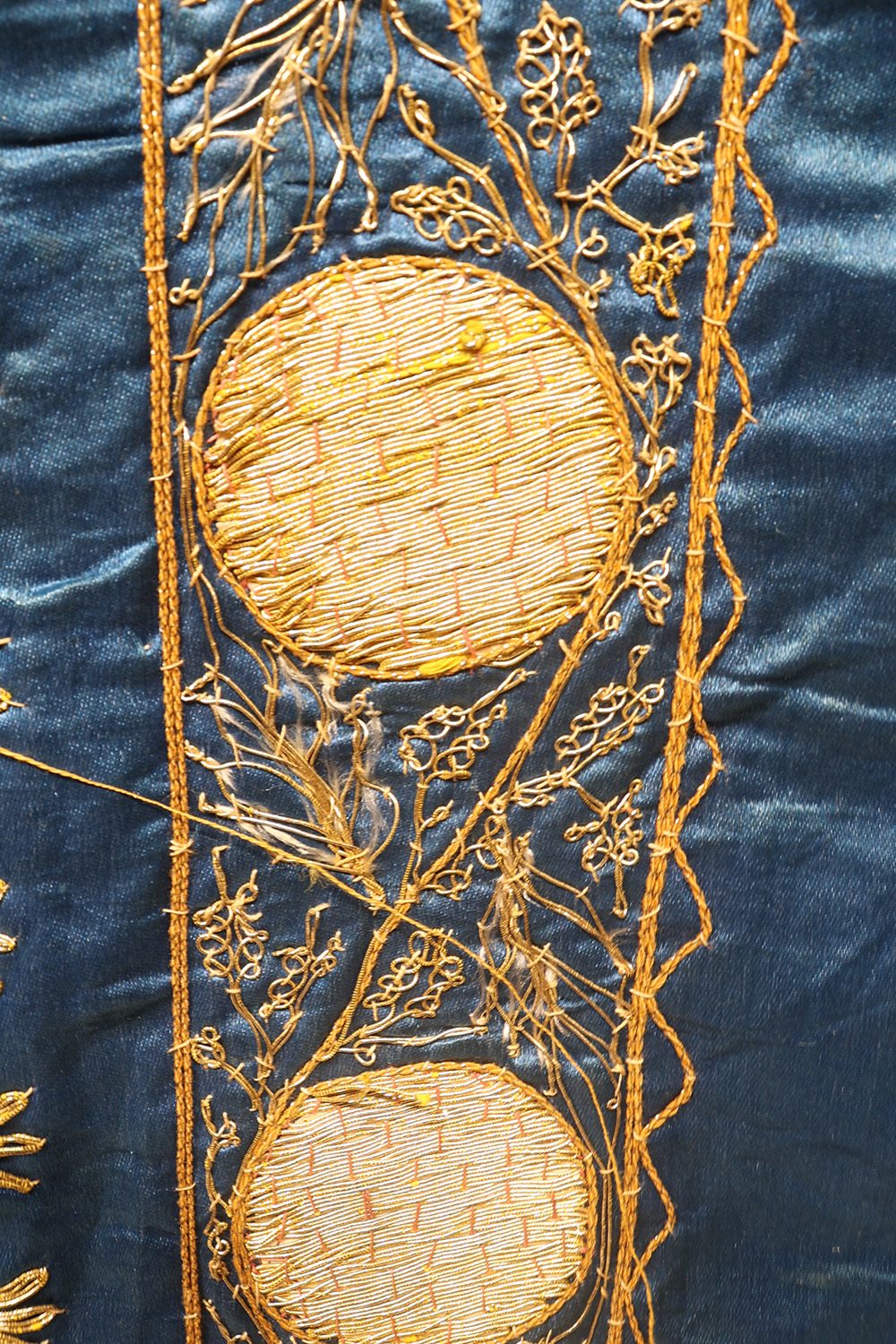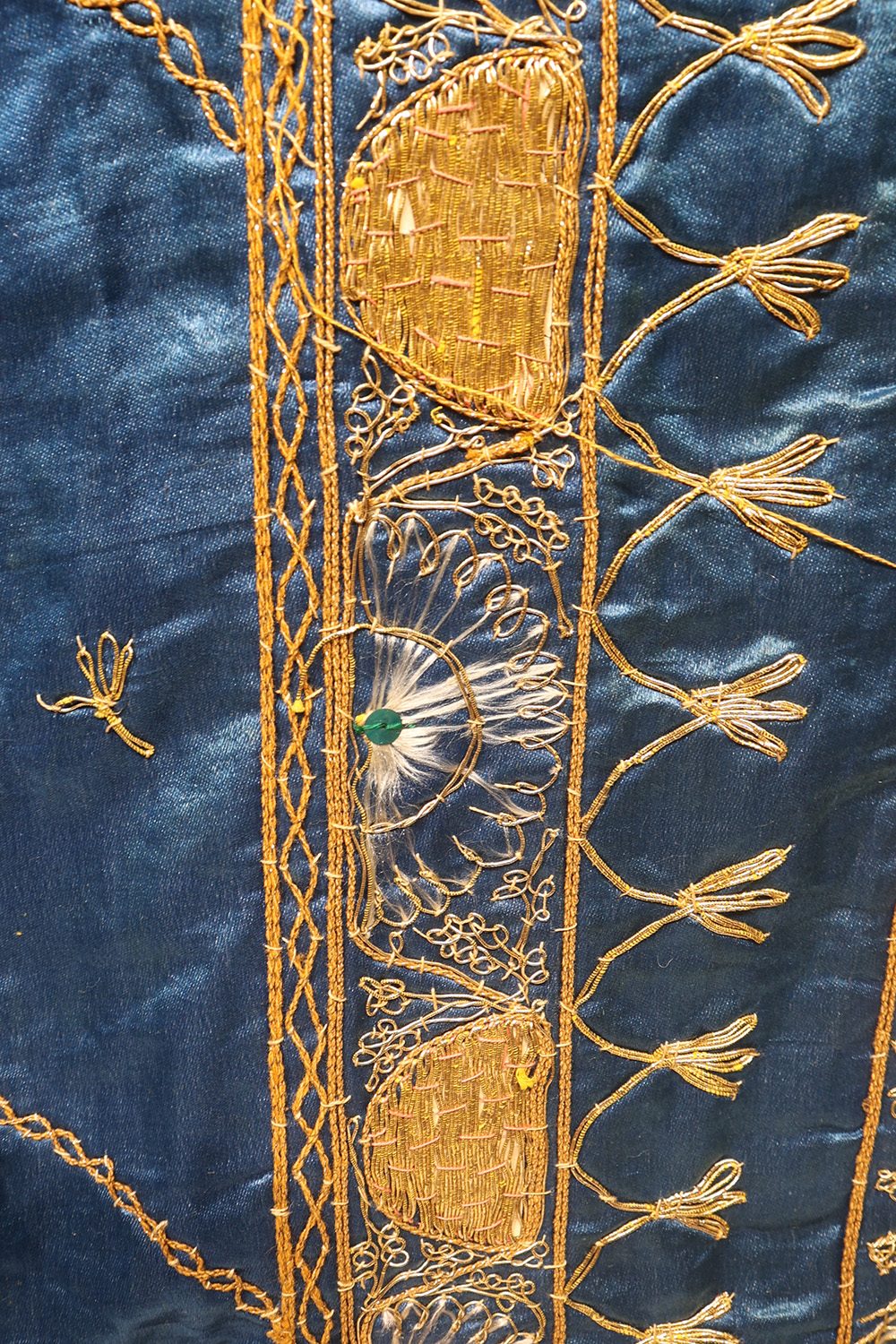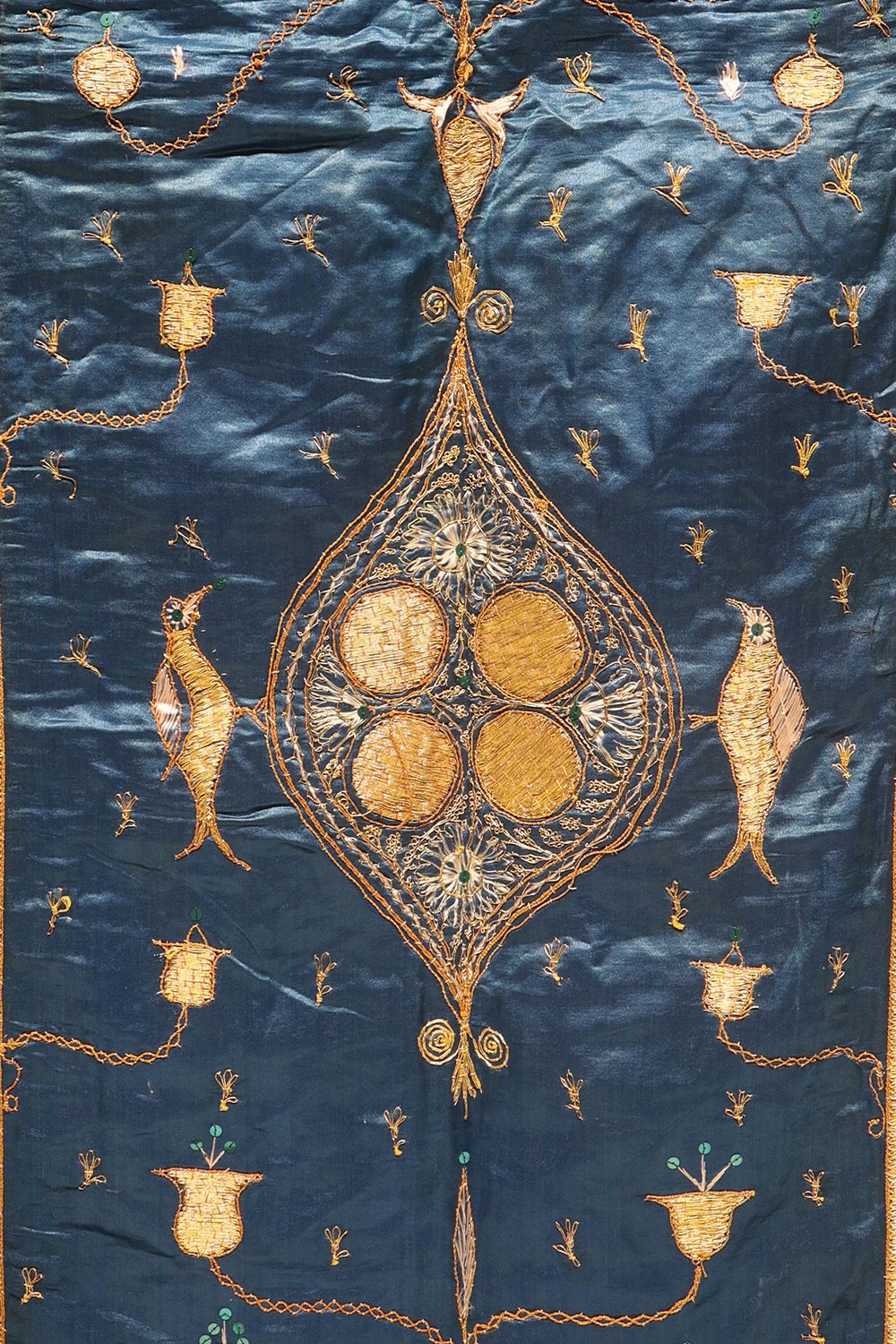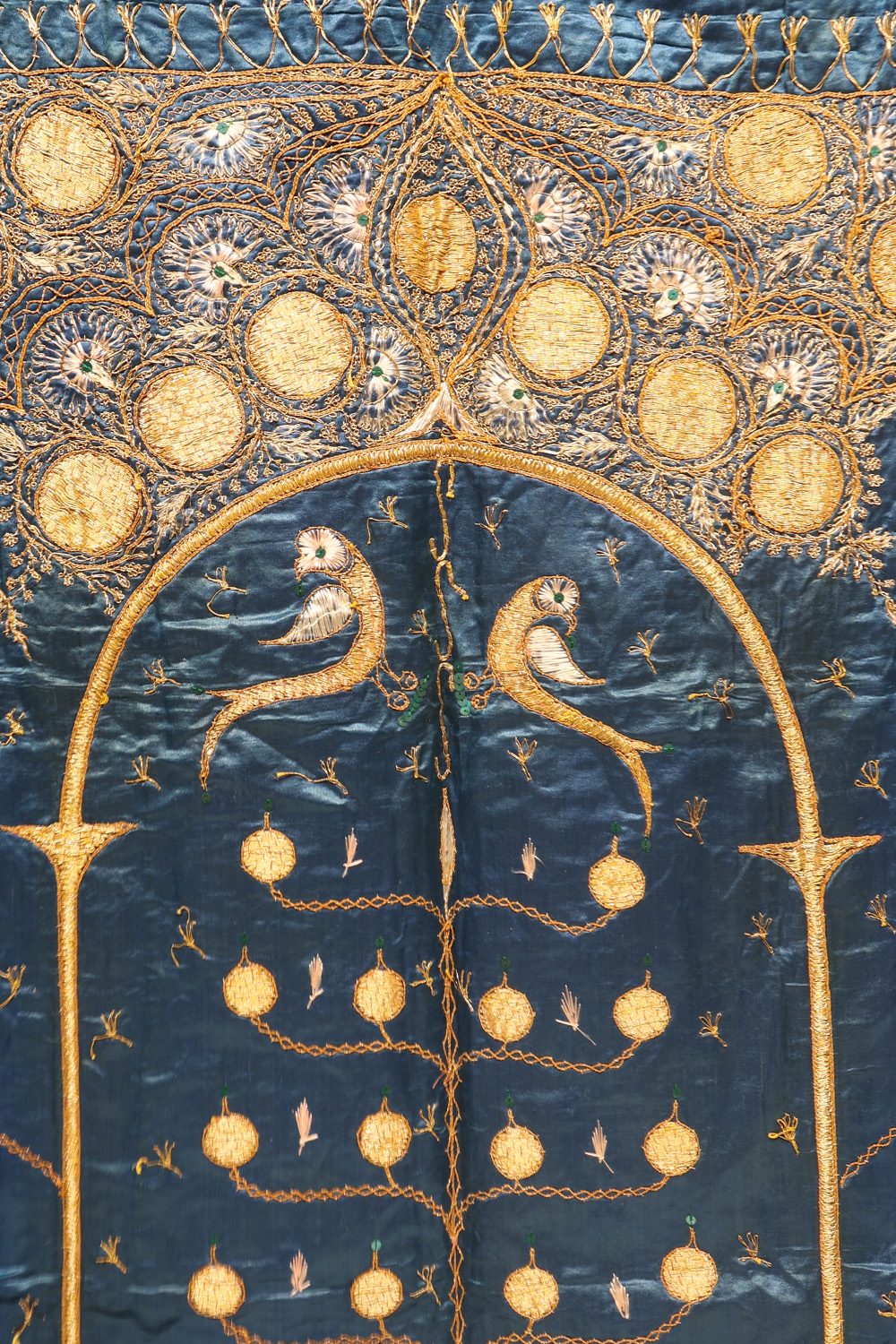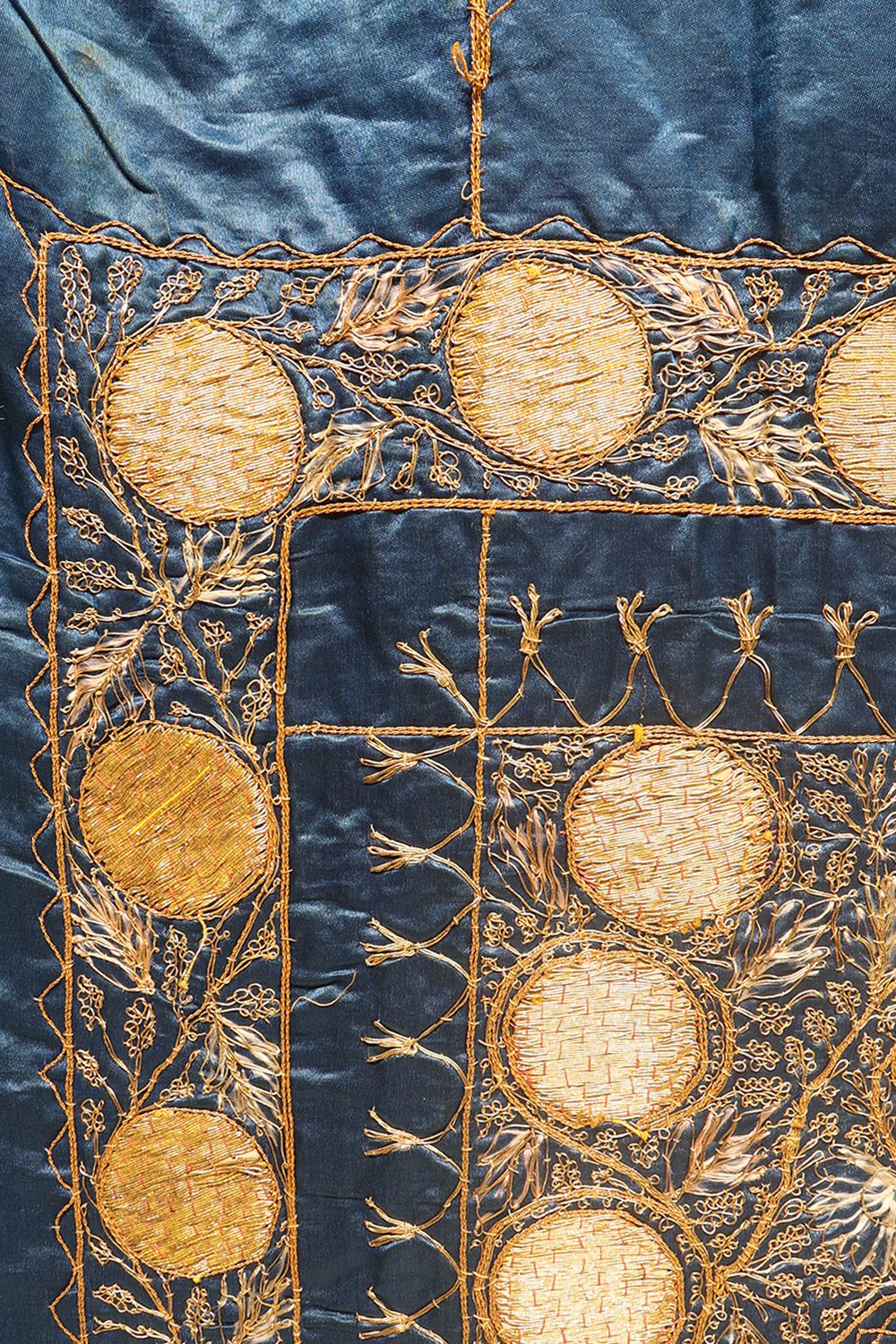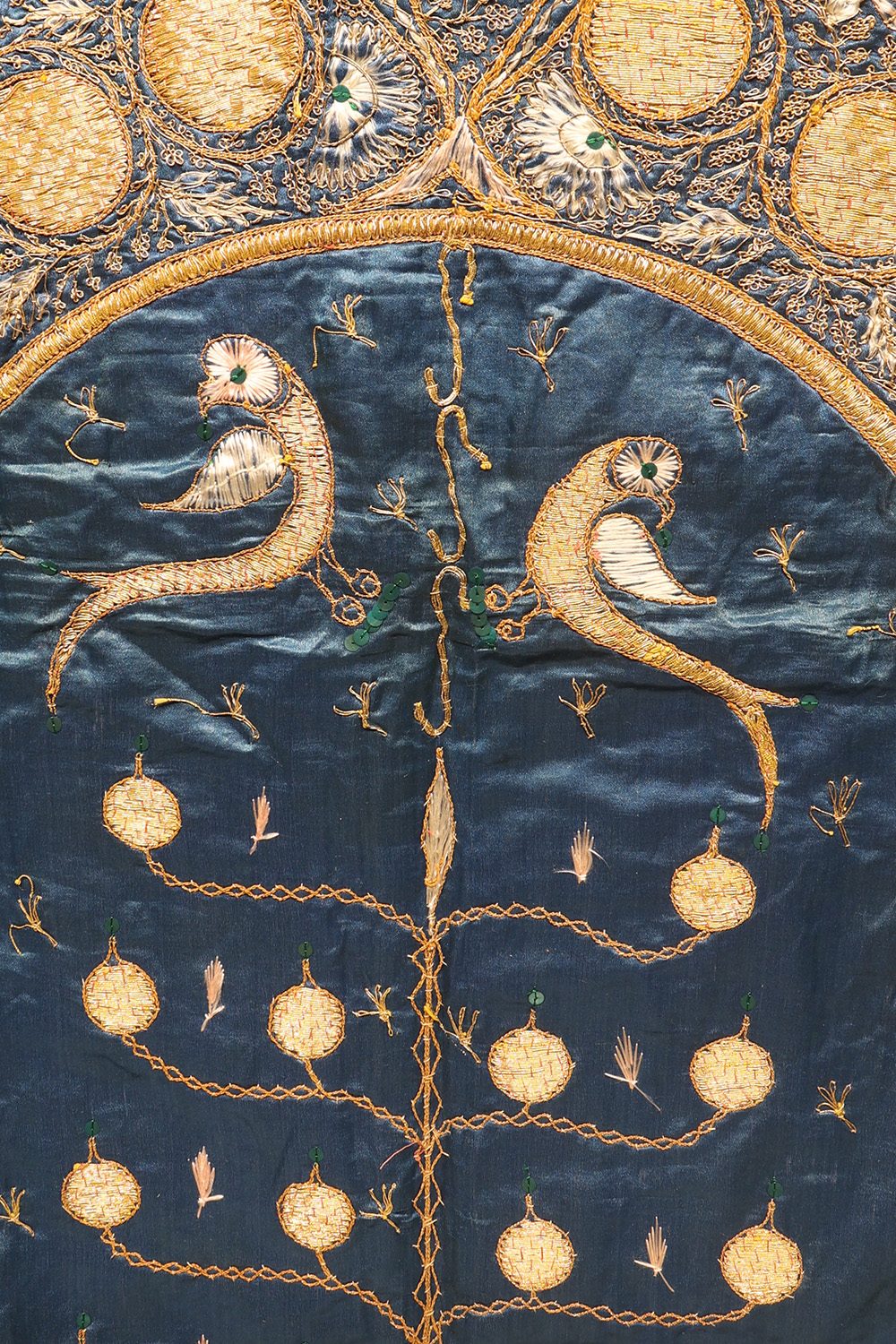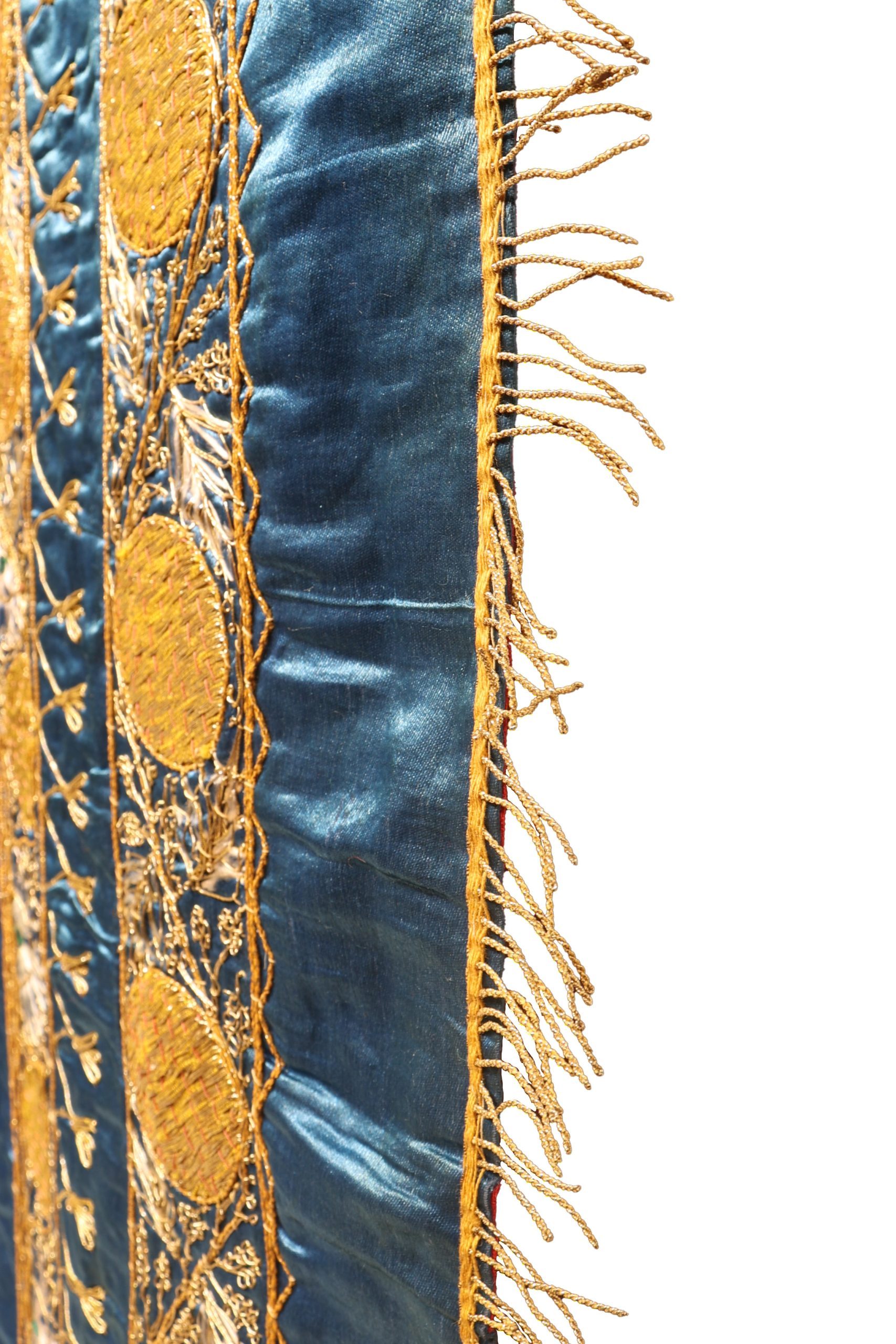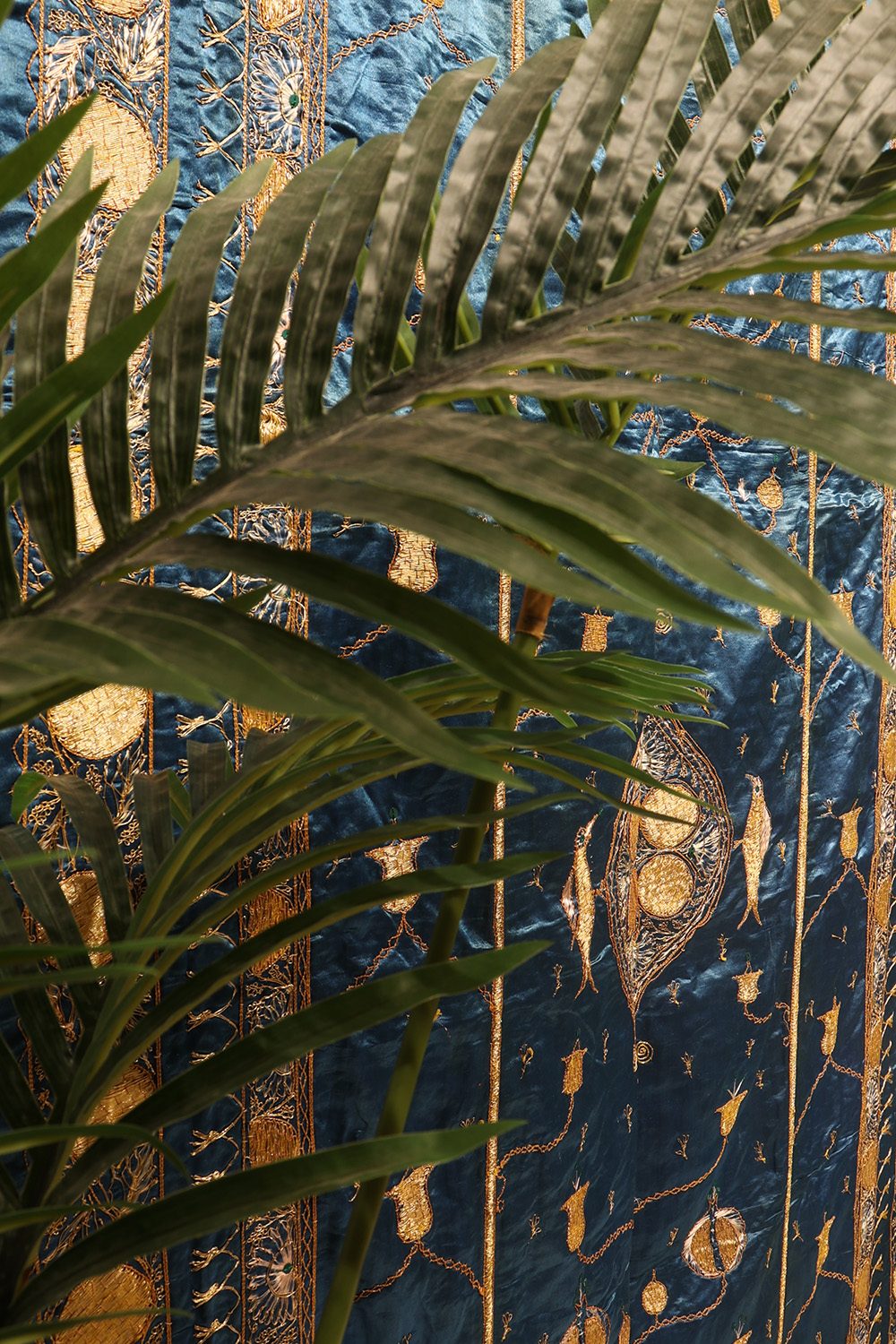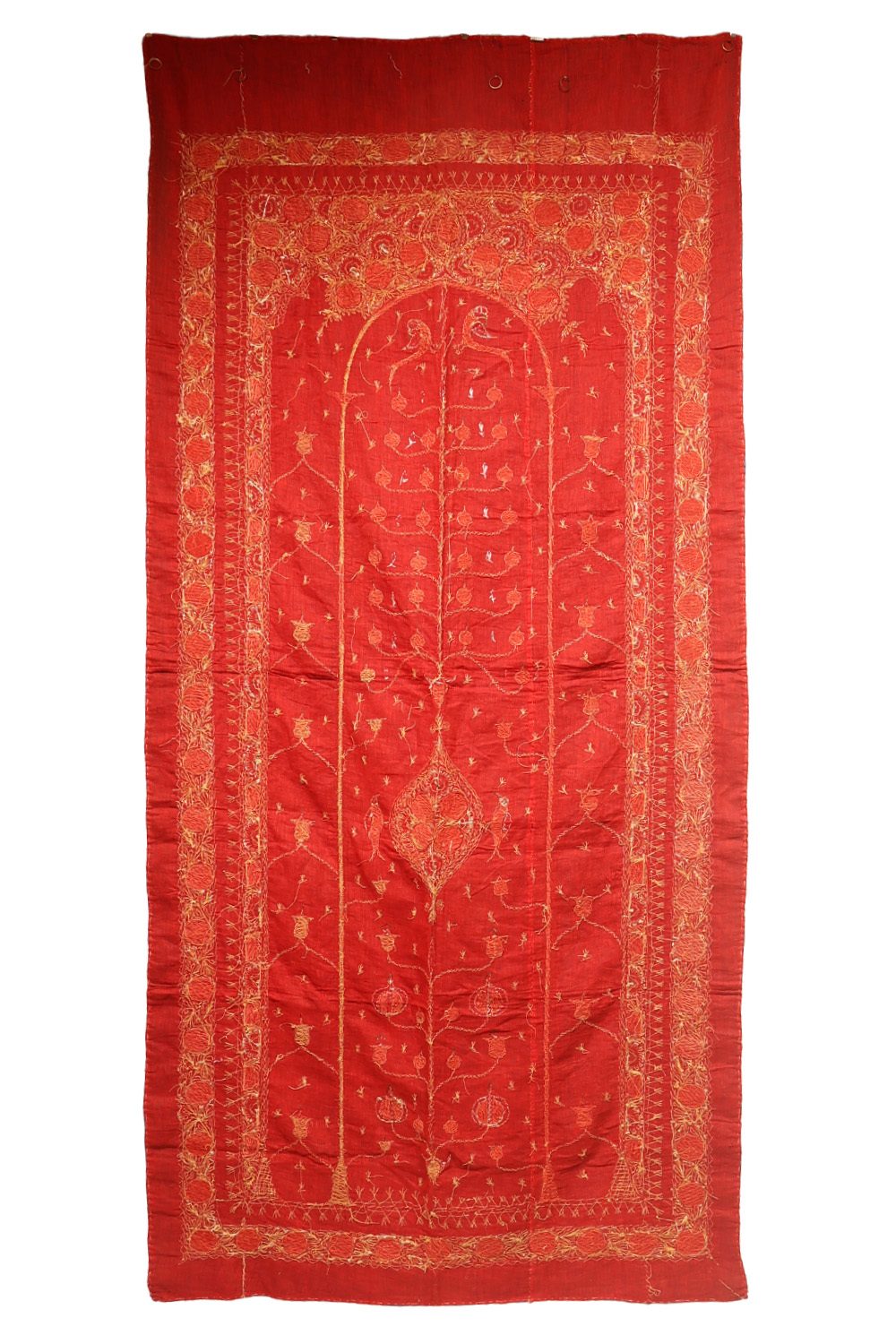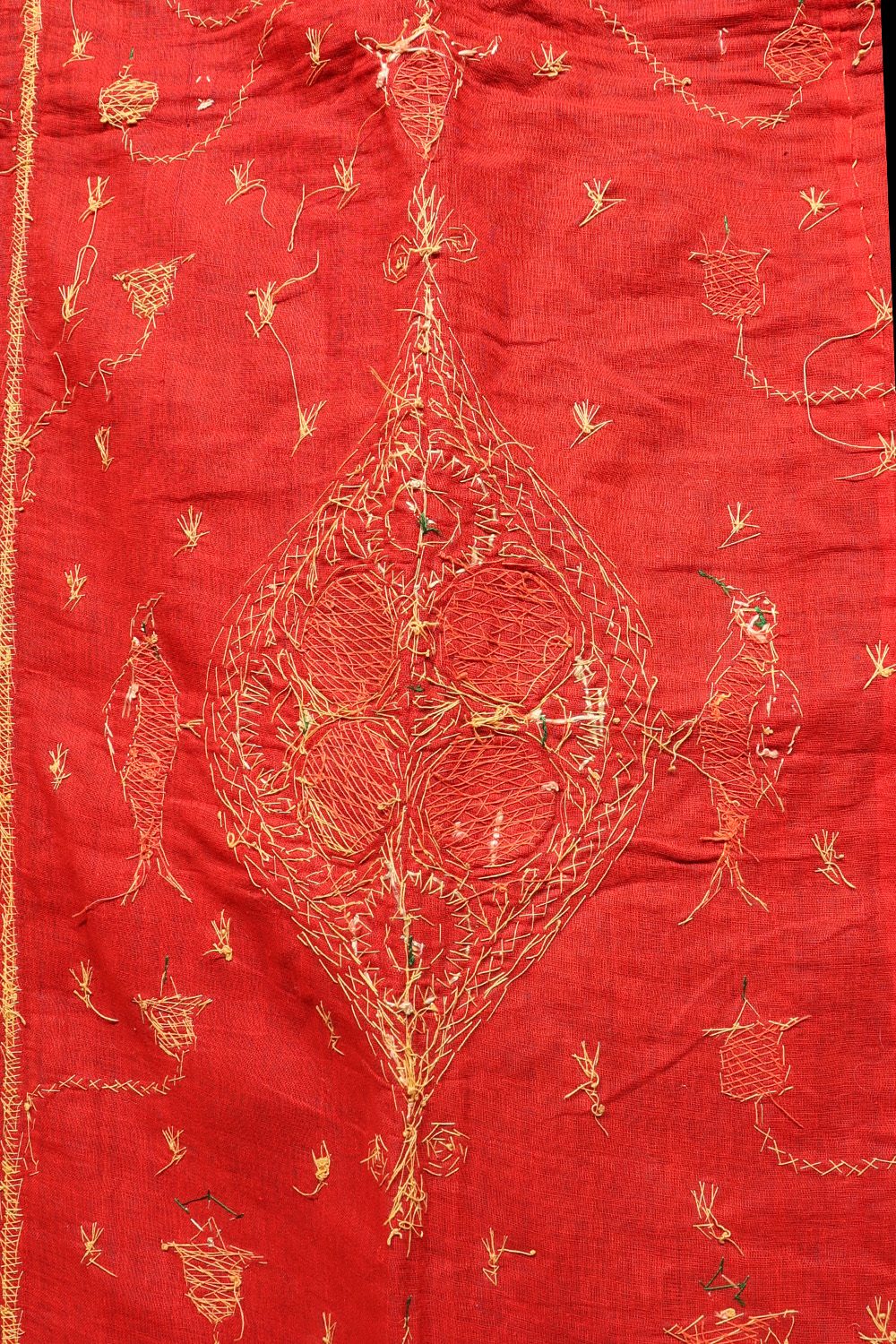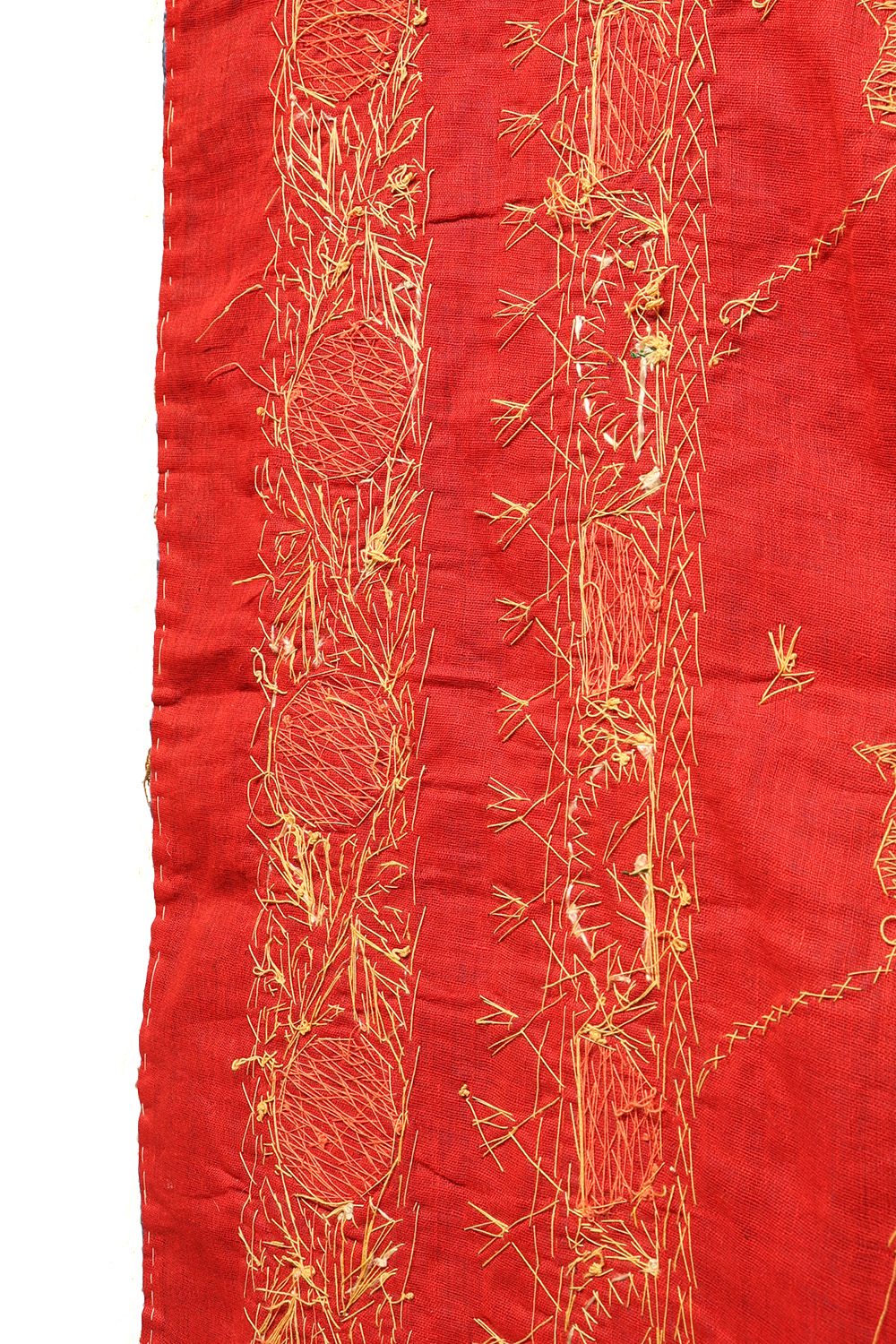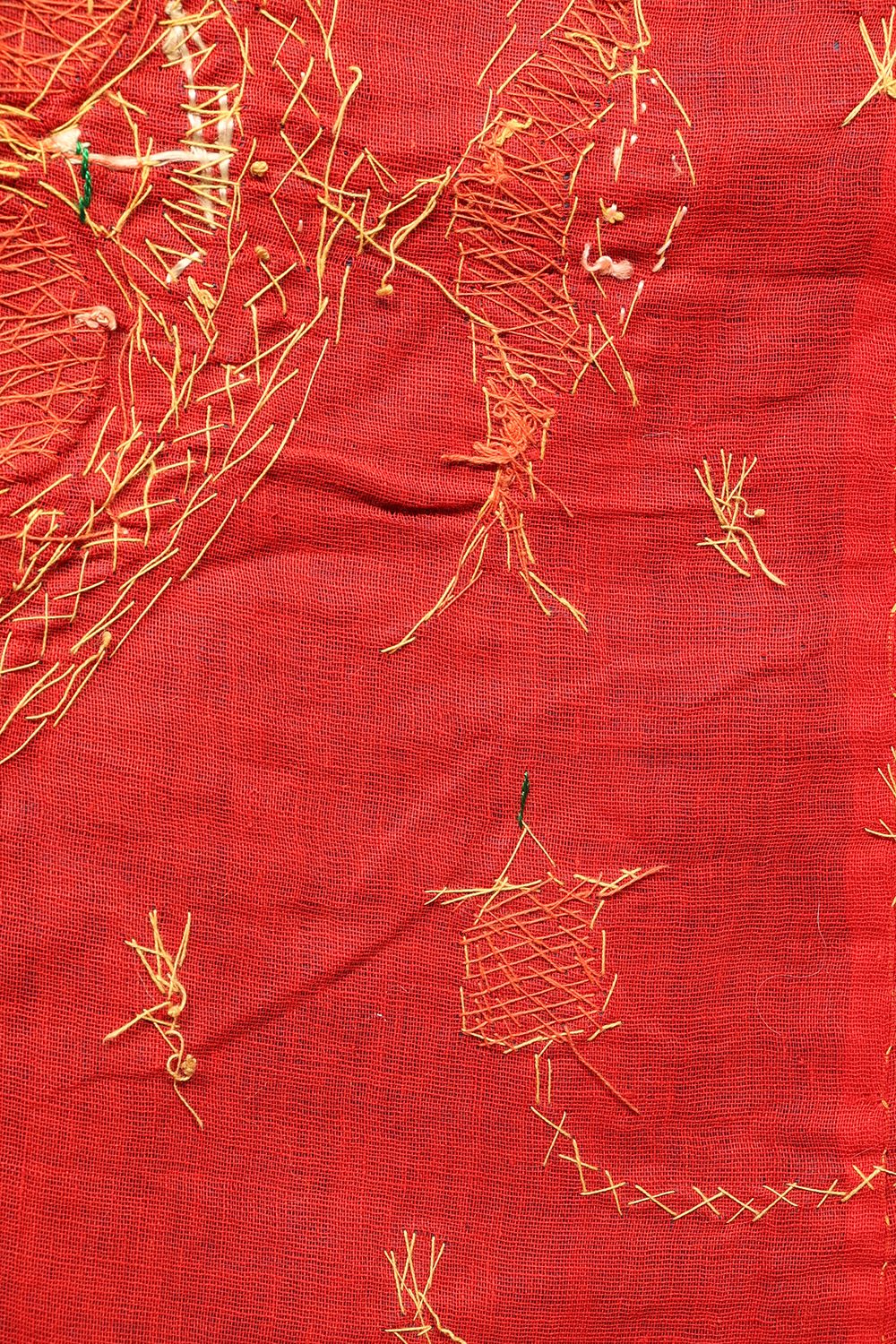2,500.00 €
A superb and, perhaps, unique 19th century Ottoman silk embroidery with metal thread. The composition of this very delicate and at the same time sophisticated silk textile is very big prayer field with a Mihrab. The central tree, unusually, combines branches of pomegranates and tulips. The two birds at the centre of the piece and the two at the top are from different species. The deep blue colour combined with the gold and yellow, appear to be a night time sky. This incredible Ottoman period is beautifully embroidered combining areas of heavy embroidery with others with very light and delicate drawing. The back is of handspun red cotton material. In mint condition. The sequins are a latter addition, and we can removed them.
Material: 100% silk and metal thread
Size: 254×119 cms
Origin: Turkey
Date of weaving: 1800-1900s
Ottoman silk textiles are among the most elegant textiles produced in the Islamic world. They are characterized by large-scale stylized motifs often highlighted by shimmering metallic threads. Executed in a range of woven techniques including satin and velvet, these silks were produced for use both within the Ottoman empire and for export to Europe and the Middle East, where they were considered among the most prized luxury objects.
Embroidered motifs often carry symbolic meaning. A widespread symbol across the Islamic world (and also often found on Islamic textiles) is the tree of life, signifying birth, growth to maturity, death and rebirth. It can be shown in many forms, such as a deliberately stylised tree, sometimes flanked by pairs of birds or fruits such as pomegranates, or a vase of flowers.
As a symbol, the tulip is rich and multi-faceted. In addition to signifying feminine beauty, perfection, paradise, the Turkish native homeland and collective cultural identity, the tulip also possessed a spiritual dimension. It was thought to protect from evil as demonstrated by Ottoman talismans.
1 in stock
Additional information
| Weight | 1.5 kg |
|---|
Subscribe and receive the lastest news
